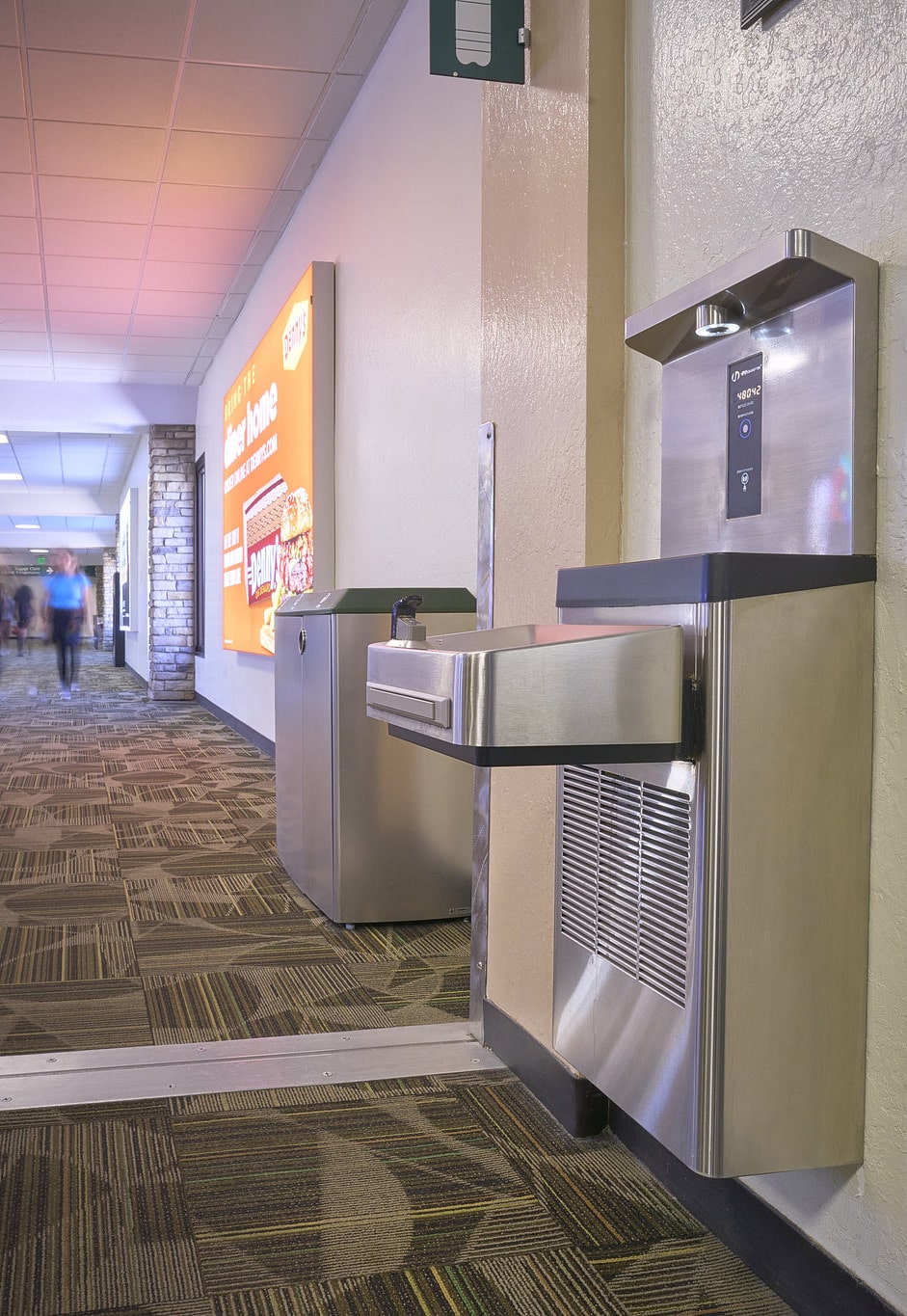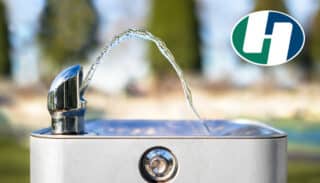
Adapted by Spaces4Learning
FROM 2008–2010, REUSABLE WATER BOTTLES GAINED enormous popularity, especially among U.S. college students who sought more sustainable choices and K–12 students who were learning to make healthier food choices.
For both of those groups, ready access to water grew in importance throughout school and campus settings, indoors and outdoors. Facilities managers retrofitting older water fountains, water coolers and bottle fillers in new construction or renovated spaces, are finding that student expectations require new thinking around all aspects of hydration in education. Spaces4Learning spoke with Damon Shaw, global director of product management at Haws, about the prevailing trends influencing his industry as well as water access in higher education and K–12 schools.
1. Mitigating Unhealthy Choices
Points of access to fresh, clean water can drive student behaviors, according to Shaw. For many years in the U.S., water fountains were placed almost exclusively in school cafeterias and hallways.
“Where you don’t offer access to water in those areas, you open yourself up to unhealthy choices” such as the soda machine, Shaw said.
Reusable — now ubiquitous — water bottles in education now require access beyond simple water fountains. Instead, students expect to fill the 20-ounce bottle they carry around throughout the day. “It’s just amazing to me, the focus that my kids’ generation has on having water with them at all times,” Shaw said. Drinking fountains have a new purpose. People are not just interested in taking a sip and running back to class.”
2. Touch-Free, Rapid Access
During COVID-19, people “became nervous about touching surfaces, so our emphasis turned to hands-free access for sanitation,” Shaw said Especially where younger kids are not the most disciplined hand washers.” And COVID also started us asking ‘why are kids congregating in the hallway to access water?’
Schools and college campuses rethought placement and speed of fill-up, adding options in K–12 classrooms to mitigate the need for students to fill their bottles in the hallway, reducing the spread of germs and expediting time during fill-up.
Bottle fillers also began to offer touch-free sensors and faster fill rates, to refill reusable bottles quickly, without requiring students to touch the equipment. Haws bottle fillers offer a flow rate of .5 to 1 gallon per minute, Shaw noted.
“When you’re going to class, your hands are full and you’re probably in a rush, they just need to get the water easy and fast,” he said. “You just activate a sensor, fill it up hands-free, and go.”
3. Vandal-Proof
As with any equipment used within an educational setting, bottle fillers and drinking fountains face rough handling, tampering and vandalism. Schools and higher education campuses require vandal resistant components like hidden fasteners or screws that prevent unwanted or unauthorized access to internal components, which is especially important on bottle filler products that include sensitive electronic sensors. Hidden programming buttons and menus discourage tampering but also do not require major disassembly to gain access to adjust them, easing maintenance and other upkeep. Automatic water shutoff prevents flooding if a touchless sensor is permanently blocked, or any button is blocked in the “on” position. Anti-rotational bubbler heads prevent them being twisted or pulled out of position.
Vandal-resistant components typically offer scratch-resistance and the ability to withstand abrasions and high-traffic wear and tear as well. Heavy-duty universal mounting prevents theft or damage from pulling. Galvanized steel frames and support structures provide additional strength and long-wearing protection that keeps the latest hydration solutions looking and working like new for years to come.
Luther Haws patented the first sanitary drinking faucet in 1906. And Haws was the first company to offer the hydration station. Today, Haws’s stainless steel Electric Water Cooler with Bottle Filler provides filtered, sensor-operated bottle filling capabilities in hi-lo wall-mounted products. Haws’s heavy duty, vandal-resistant Outdoor Bottle Fillers feature filtered, stainless steel bottle fillers, and drinking fountains.

Discover OUR
Indoor Hydration SolutionsLearn More
Outdoor Hydration Solutions



